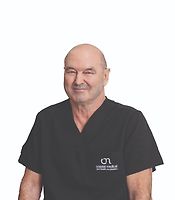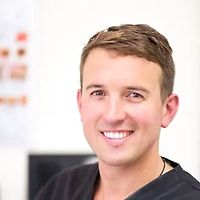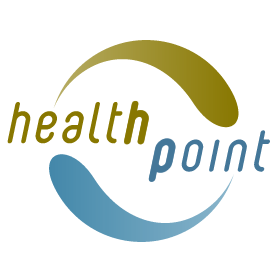Taranaki > Specialised Primary Health Care >
Skin on Forty-Five
Cosmetic Medicine Service, Skin Cancer, Vein Treatment
Today
Description
Skin on Forty-Five’s cosmetic and surgical facilities are located in the heart of New Plymouth, providing a professional medical service with the luxury of a medical spa.
We offer a wide range of accredited medical and surgical skin and vein services, Taranaki's only NZCAM fully accredited cosmetic clinic and an oasis of skincare and pampering.
Medical & Surgical Services
- Skin cancer
- Varicose veins
- Blepharoplasty (eyelid surgery)
- Musculoskeletal PRP (Platelet Rich Plasma) treatment
- Surgitron® mole removal
Cosmetic Medicine
Aesthetic & Beauty
Staff
KYLIE CANTLON: Practice Manager
RN NICKY STOLTE: Cosmetic Registered Nurse (BSc)
RN SHONA BROWN: Registered Nurse and MoleMap Dermoscopist
AMANDA WANSBROUGH: MCA (Primary Care Practice Assistance)
ANNA PEPPERELL: McA (Primary Care Practice Assistance), Marketing & Design
ROSE SHARROCK: Aesthetician
ABBY WOOD: Aesthetician
NATALIE BROUGHTON: Receptionist/Bookings
LAURA HILLIER: Receptionist/Bookings
Doctors
-

Dr Brent Anderson
Clinical Director
-

Dr Shaun Butler
Clinical Director
-

Dr Nick Loveridge-Easther
Clinical Director
-

Dr David Van Hyfte
Skin Cancer Doctor
Ages
Child / Tamariki, Adult / Pakeke, Youth / Rangatahi, Older adult / Kaumātua
How do I access this service?
Make an appointment, Referral, Walk in
Fees and Charges Categorisation
Fees apply
Fees and Charges Description
See our website for pricing of all services.
We are a Southern Cross Affiliated Provider and NIB First Choice Health Partner.
Hours
| Mon – Tue | 9:00 AM – 5:00 PM |
|---|---|
| Wed – Thu | 9:00 AM – 7:00 PM |
| Fri | 9:00 AM – 5:00 PM |
Public Holidays: Closed Waitangi Day (6 Feb), Taranaki Anniversary (9 Mar), Good Friday (3 Apr), Easter Sunday (5 Apr), Easter Monday (6 Apr), ANZAC Day (observed) (27 Apr), King's Birthday (1 Jun), Matariki (10 Jul), Labour Day (26 Oct).
Christmas: Open 22 Dec — 24 Dec. Closed 25 Dec — 28 Dec. Open 29 Dec — 31 Dec. Closed 1 Jan — 4 Jan. Open 5 Jan — 9 Jan.
Languages Spoken
English
Services Provided
Cosmetic medicine services may include treatments such as cosmetic Botulinum Toxin injections, dermal filler, and laser skin therapy.
Cosmetic medicine services may include treatments such as cosmetic Botulinum Toxin injections, dermal filler, and laser skin therapy.
- Cosmetic injectables
- Chemical peels
- Skin treatments
- Laser treatments
- Microdermabrasion
- Hair replacement
- Scar revision
Cosmetic medicine services may include treatments such as cosmetic Botulinum Toxin injections, dermal filler, and laser skin therapy.
Find skin cancer information here
Find skin cancer information here
Find skin cancer information here
These are bulging veins that lie just beneath the skin (superficial veins). They occur when the walls of a vein are weak or damaged or if the valves in the vein that normally stop the blood from flowing backwards are impaired, resulting in pooling of the blood and stretched veins. Besides being unattractive, varicose veins can be painful and cause inflammation or ulceration. The following different types of surgery are available if varicose veins require treatment: Radio Frequency Ablation (RFA) – Recognised as the Gold Standard treatment for Varicose Veins providing the longest lasting results with the fastest recovery. Surgery is no longer needed for most people with varicose veins. RFA uses thermal energy (heat) to treat varicose veins. A thin catheter (a long tube) is inserted into the faulty vein and once the vein is anesthetised, the catheter heats up, sealing the vein closed. The body then gradually absorbs the closed vein over several months. The entire procedure typically takes one to two hours and unlike surgical options, RFA leaves no visible scars. Endovenous Laser Ablation (EVLA) – This is also a gold-standard technique but has recently been superseded by Radio Frequency Ablation (RFA). Ultrasound Guided Sclerotherapy (UGS) – First-line treatment for smaller varicose, reticular and spider veins and commonly used in conjunction with RFA to ensure the best outcomes for our clients. During UGS, a special solution (often in the form of foam sclerotherapy) is injected directly into the varicose veins under guidance of an ultrasound. The solution is designed to close off the faulty vein by irritating its walls. Once the abnormal vein is treated, the body gradually absorbs it over several months. Blood flow is redirected through deeper veins, leading to an improved venous system and a reduction in varicose vein symptoms. The advantages of UGS is that most patients can return to work within an hour of treatment, it provides both functional relief and cosmetic enhancement and it is simple and straightforward. Nd:Yag Laser Sclerotherapy – Nd:YAG laser is the gold standard technology for the non-invasive treatment of small spider veins and facial telangiectasia. During the procedure, the Nd:YAG laser emits energy. This energy is absorbed by the haemoglobin (in blood) and melanin (in pigmented areas). The laser causes coagulation and closure of the targeted veins.
These are bulging veins that lie just beneath the skin (superficial veins). They occur when the walls of a vein are weak or damaged or if the valves in the vein that normally stop the blood from flowing backwards are impaired, resulting in pooling of the blood and stretched veins. Besides being unattractive, varicose veins can be painful and cause inflammation or ulceration. The following different types of surgery are available if varicose veins require treatment: Radio Frequency Ablation (RFA) – Recognised as the Gold Standard treatment for Varicose Veins providing the longest lasting results with the fastest recovery. Surgery is no longer needed for most people with varicose veins. RFA uses thermal energy (heat) to treat varicose veins. A thin catheter (a long tube) is inserted into the faulty vein and once the vein is anesthetised, the catheter heats up, sealing the vein closed. The body then gradually absorbs the closed vein over several months. The entire procedure typically takes one to two hours and unlike surgical options, RFA leaves no visible scars. Endovenous Laser Ablation (EVLA) – This is also a gold-standard technique but has recently been superseded by Radio Frequency Ablation (RFA). Ultrasound Guided Sclerotherapy (UGS) – First-line treatment for smaller varicose, reticular and spider veins and commonly used in conjunction with RFA to ensure the best outcomes for our clients. During UGS, a special solution (often in the form of foam sclerotherapy) is injected directly into the varicose veins under guidance of an ultrasound. The solution is designed to close off the faulty vein by irritating its walls. Once the abnormal vein is treated, the body gradually absorbs it over several months. Blood flow is redirected through deeper veins, leading to an improved venous system and a reduction in varicose vein symptoms. The advantages of UGS is that most patients can return to work within an hour of treatment, it provides both functional relief and cosmetic enhancement and it is simple and straightforward. Nd:Yag Laser Sclerotherapy – Nd:YAG laser is the gold standard technology for the non-invasive treatment of small spider veins and facial telangiectasia. During the procedure, the Nd:YAG laser emits energy. This energy is absorbed by the haemoglobin (in blood) and melanin (in pigmented areas). The laser causes coagulation and closure of the targeted veins.
These are bulging veins that lie just beneath the skin (superficial veins). They occur when the walls of a vein are weak or damaged or if the valves in the vein that normally stop the blood from flowing backwards are impaired, resulting in pooling of the blood and stretched veins. Besides being unattractive, varicose veins can be painful and cause inflammation or ulceration.
The following different types of surgery are available if varicose veins require treatment:
Radio Frequency Ablation (RFA) – Recognised as the Gold Standard treatment for Varicose Veins providing the longest lasting results with the fastest recovery. Surgery is no longer needed for most people with varicose veins. RFA uses thermal energy (heat) to treat varicose veins. A thin catheter (a long tube) is inserted into the faulty vein and once the vein is anesthetised, the catheter heats up, sealing the vein closed. The body then gradually absorbs the closed vein over several months. The entire procedure typically takes one to two hours and unlike surgical options, RFA leaves no visible scars.
Endovenous Laser Ablation (EVLA) – This is also a gold-standard technique but has recently been superseded by Radio Frequency Ablation (RFA).
Ultrasound Guided Sclerotherapy (UGS) – First-line treatment for smaller varicose, reticular and spider veins and commonly used in conjunction with RFA to ensure the best outcomes for our clients. During UGS, a special solution (often in the form of foam sclerotherapy) is injected directly into the varicose veins under guidance of an ultrasound. The solution is designed to close off the faulty vein by irritating its walls. Once the abnormal vein is treated, the body gradually absorbs it over several months. Blood flow is redirected through deeper veins, leading to an improved venous system and a reduction in varicose vein symptoms. The advantages of UGS is that most patients can return to work within an hour of treatment, it provides both functional relief and cosmetic enhancement and it is simple and straightforward.
Nd:Yag Laser Sclerotherapy – Nd:YAG laser is the gold standard technology for the non-invasive treatment of small spider veins and facial telangiectasia. During the procedure, the Nd:YAG laser emits energy. This energy is absorbed by the haemoglobin (in blood) and melanin (in pigmented areas). The laser causes coagulation and closure of the targeted veins.
Minor surgery is commonly provided in primary care practices, providing fast, competent removal and biopsies of skin lesions. Other services include cosmetic work such as removal of benign moles and skin tags. Ingrown toenail surgery is also commonly provided. These conditions do not need to be referred to a hospital, perhaps saving you a long wait or a cancelled appointment when a more serious case takes priority.
Minor surgery is commonly provided in primary care practices, providing fast, competent removal and biopsies of skin lesions. Other services include cosmetic work such as removal of benign moles and skin tags. Ingrown toenail surgery is also commonly provided. These conditions do not need to be referred to a hospital, perhaps saving you a long wait or a cancelled appointment when a more serious case takes priority.
Minor surgery is commonly provided in primary care practices, providing fast, competent removal and biopsies of skin lesions. Other services include cosmetic work such as removal of benign moles and skin tags. Ingrown toenail surgery is also commonly provided.
These conditions do not need to be referred to a hospital, perhaps saving you a long wait or a cancelled appointment when a more serious case takes priority.
Service types: Skin cancer service.
Service types: Skin cancer service.
Service types: Skin cancer service.
Service types: Minor Surgery.
Service types: Minor Surgery.
Service types: Minor Surgery.
Disability Assistance
Wheelchair access, Wheelchair accessible toilet
Additional Details
Face to face / Kanohi ki te Kanohi, Phone, Speak with women / wahine, Speak with men / tane, Child / Tamariki friendly, LGBTQIA+ friendly
Online Booking URL
Website
Contact Details
51 Egmont Street, New Plymouth
Taranaki
-
Phone
(06) 927 3491
Email
Website
51 Egmont Street
New Plymouth
Taranaki 4310
Street Address
51 Egmont Street
New Plymouth
Taranaki 4310
Was this page helpful?
This page was last updated at 2:53PM on May 20, 2025. This information is reviewed and edited by Skin on Forty-Five.

